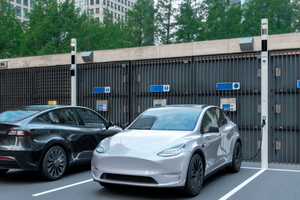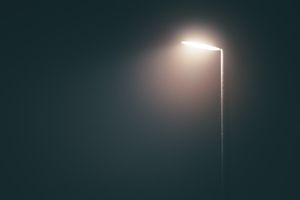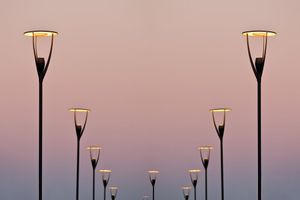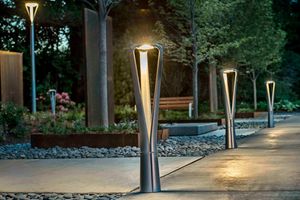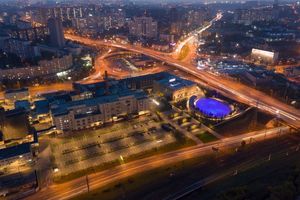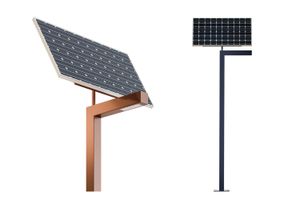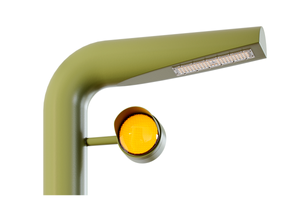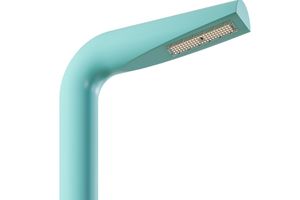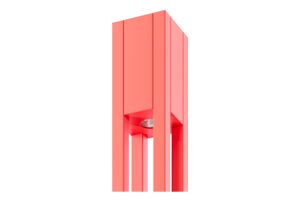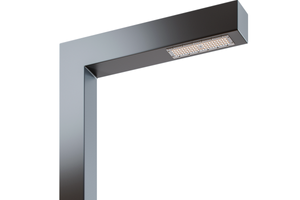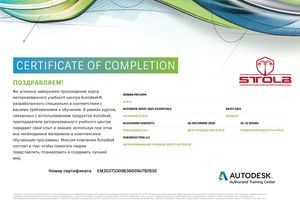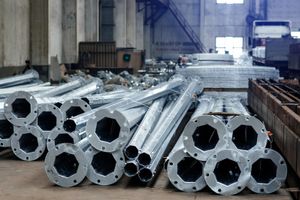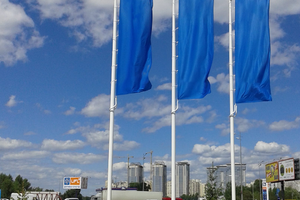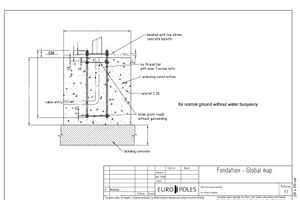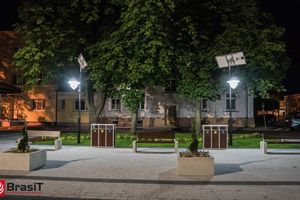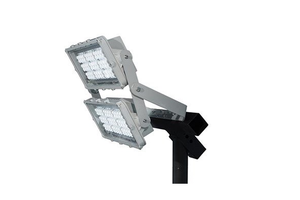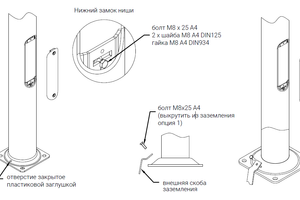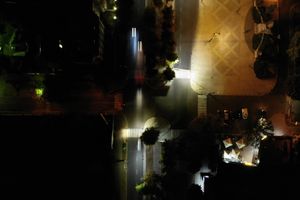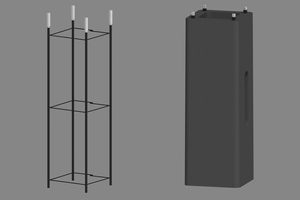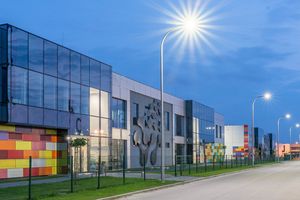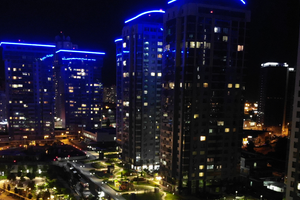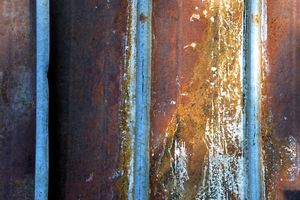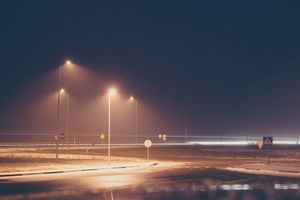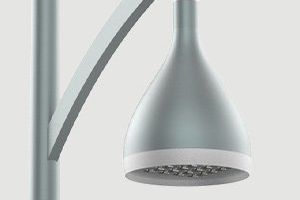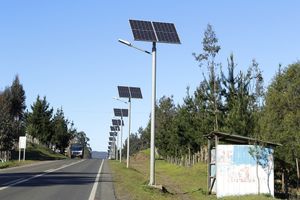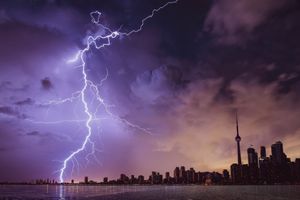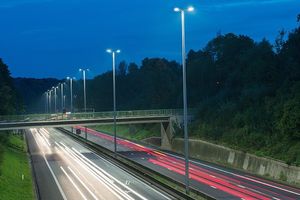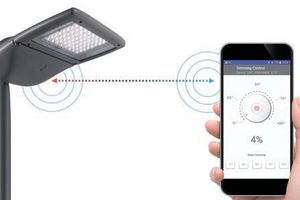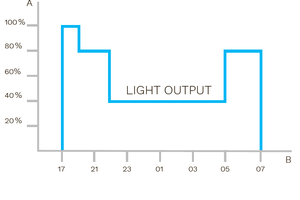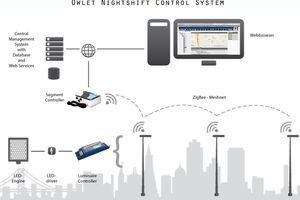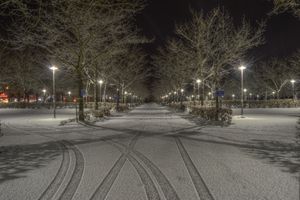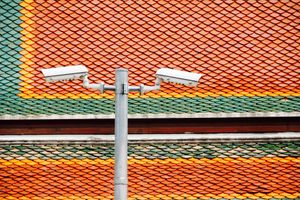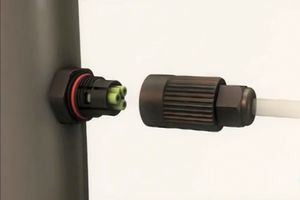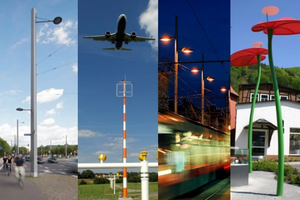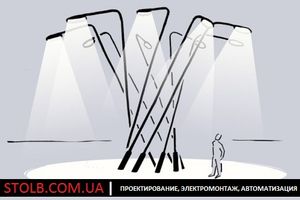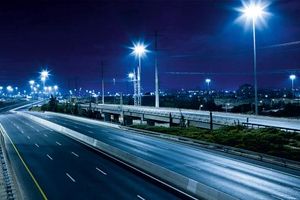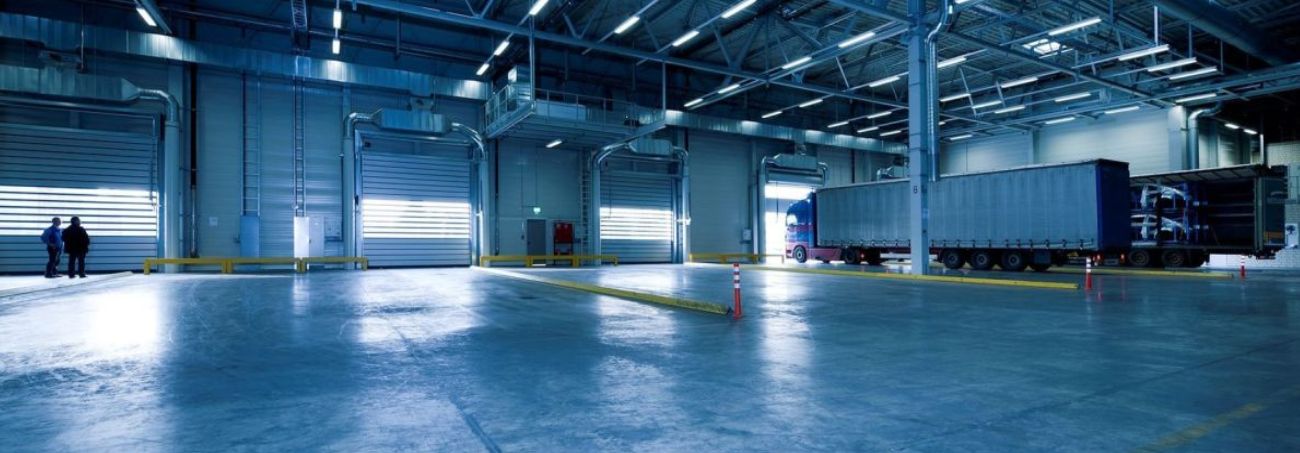
The lighting of various industrial facilities (production halls, workshops, warehouses, garages, trading floors, gas stations, construction sites, etc.) is subjected to special requirements. Safety, efficiency and performance of the workforce are dependent on the compliance of those requirements. Depending on operating conditions, different types of industrial luminaires are used.
Basic requirements to the industrial lighting
Industrial luminaires have various performance characteristics. They are determined by the size of the spaces, lighting standards, climatic and other conditions and circumstances. The following requirements are imposed on lamps:
- Vibration resistance: industrial luminaires used at building sites, production halls, mines, quarries, various metallurgical and other factories and productive types of the enterprises should have special strength and stability qualities or be placed on special supports that diminish vibration.
- Resistance to temperature changes and humidity: industrial illumination at open spaces is used all year round. Luminaires must have an corresponding degree of protection.
- High wear resistance: some industrial facilities are illuminated all the long. The uninterrupted and safe production processes depend on this. To ensure the regularity of the manufacturing, industrial fixtures must be of high quality. Moreover, such long-lasting lighting equipment is quite costly. But, frequent replacing poor-quality light fixtures will lead to the additional costs.
- Efficiency: great amounts of electricity are consumed by illumination of the large industrial facilities.This significantly increases production outgoings. To reduce them, it is necessary to use modern energy-efficient lighting devices. Replacing outworn equipment is an important prerequisite for profound success and increasing production profitability in the near future.
- Ecological safety: the use of inefficient luminaires that are thrown away too often and also dangerous mercury lamps causes environmental pollution and resource overruns. To avoid this, it is necessary to carry out the modernization of lighting systems if necessary.
The Stolb Street Light online store offers you a wide assortment of modern LED luminaires that are distinguished by a high level of energy efficiency, ecological safety and reliability. They can be selected for illumination of any industrial facility. The choice mostly is made in accordance with industry sector standards and sanitary norms.
Types of industrial luminaires
Three types of lighting are applicable in industry: natural (sunlight at open spaces or coming through windows, glass roofs and walls), artificial (lighting fixtures), combined (in the daytime).
The amount of the sunlight often could be not enough to illuminate an industrial facility even during daylight hours, therefore, artificial or combined light is most commonly used. The following factors are taken into account when creating artificial lighting for industrial premises:
- the specifics of the enterprise;
- scope of production;
- production conditions;
- areas of illuminated territories;
- the risk category of explosion and fire.
The selection of lighting fixtures and other equipment is executed by experts at the stage of designing the industrial illumination.
When mounting the industrial lighting systems, various types of lamps are used. They have their own advantages and disadvantages:
- Incandescent lamps: filaments of refractory material based on tungsten emit the luminescence when an electric current passes through them. Their advantages - low cost, instant glow when turned on, do not interfere with the operation of the equipment. But nowadays the incandescent lamps are almost not used at creation of modern industrial lighting systems at all due to the number of their negative sides. They are low energy efficiency first of all (95% of the electricity is converted into heat), quick failure in conditions of hightened humidity and industrial dust, small operational potential (1 thousand hours) and, last but not least, sensitivity to voltage surges.
- Mercury-vapor lamps: arc phosphor light sources. Their advantages are moderate cost, compact size. The level of their light output also intensifies in comparison to conventional incandescent lightbulbs. Disadvantages: a prolonged ignition process (attaining a maximum power in 10-15 minutes), having a monotonous, fairly loud buzz during operation, the inability to use it in lighting systems with sensors, and the use of mercury in production.
- Sodium-vapor lamps: industrial arc gas-discharge sodium based lamp. They demonstrate a relatively long services life (up to 25 thousand hours) and a high level of light output. Practically not used in modern industry because of long ignition, flicker effect, mercury content, low quality of color rendering, high price.
- Fluorescent lamps: mercury-vapor arc gas-discharge lamps. They have an affordable price, heat up insignificantly, have a high level of light output and a long service life (2–20 thousand hours). Among the disadvantages - increased chemical danger because of the mercury content, poor light quality, flickering, decreased light output in course of time. Mainly were used to create industrial ceiling light fixtures.
Industrial luminaires of the above listed types are considered obsolete. They must be totally decommissioned due to their significant drawbacks.
LED lamps are used to create a modern industrial lighting. LED lights have the following benefits:
- High level of energy efficiency: Coefficient of performance of modern LED lamps is approaching 100%. When talking about the lighting conditions of large industrial zones, energy efficiency matters a lot, since the use of LED lamps will noticeably reduce spendings. Despite the low power consumption, LED lights provide a powerful light stream.
- Versatility in application: LED industrial luminaires can be used in any production environment, including premises with high explosion and fire risk, high levels of humidity, dustiness, presence of temperature changes.
- Insusceptibility to voltage drops in the network: power surges in the production - a common phenomenon. In the conditions of large industrial enterprises, separate power supply lines can be drawn for power supply, so the probability of drops is in a much lesser degree. But if the lighting system does not have protection, LED lights will not be damaged anyway.
- Possibility of regulating the luminous flux: LED luminaires can be equipped with dimmers - devices that allow you to smoothly regulate the brightness of an electric light, including automatic control. This also contributes to energy saving.
- Safety: industrial LED luminaires are supplied with effective heat dissipation systems, which makes them firesafe. They can be used in any spaces and premises.
- Comfortable and pleasing light: Depending on the light-emitting diodes used, LED lamps can produce light of different color temperatures. This allows you to create comfortable and safe lighting that contributes to boosting of work productivity and maintaining the health of the eyes.
- Application in autonomous lighting systems: LED lights can be used with different modern equipment that gives you a chance to create completely automated lighting systems that respond to the level of illumination, movement, heat, etc.
A significant drawback of LED industrial lighting is their high cost. However, if taking into account the long service life of such devices (50 or more thousand hours), then their cost pays off quite quickly. Here we add energy efficiency and reliability and we'll get the opportunity for significant savings. Furthermore, new technologies are being introduced into production, which can reduce the cost of manufacturing lighting fixtures.
Selection of industrial LED luminaires
When buying LED fixtures, draw your attention to the next characteristics:
- luminous flux: the higher rate in the lumens, the brighter the lighting equipment will glow;
- mounting method: you can choose and buy ceiling, wall, hanging (pendant) and other types of LED lamps in our store;
- power capacity: calculated based on the lighting standards of the workshop, trading floor, warehouse or other premises;
- radiation pattern: is designed to create an even or directional illumination;
- color temperature: depends on the desirably comfort level of lighting.
You can select and order LED luminaires of well-known manufacturers in our online-store or we can assist you with that. We bring to life modern and reliable industrial lighting systems of any complexity, performing all kinds of work from design to delivery of equipment and installation.















































